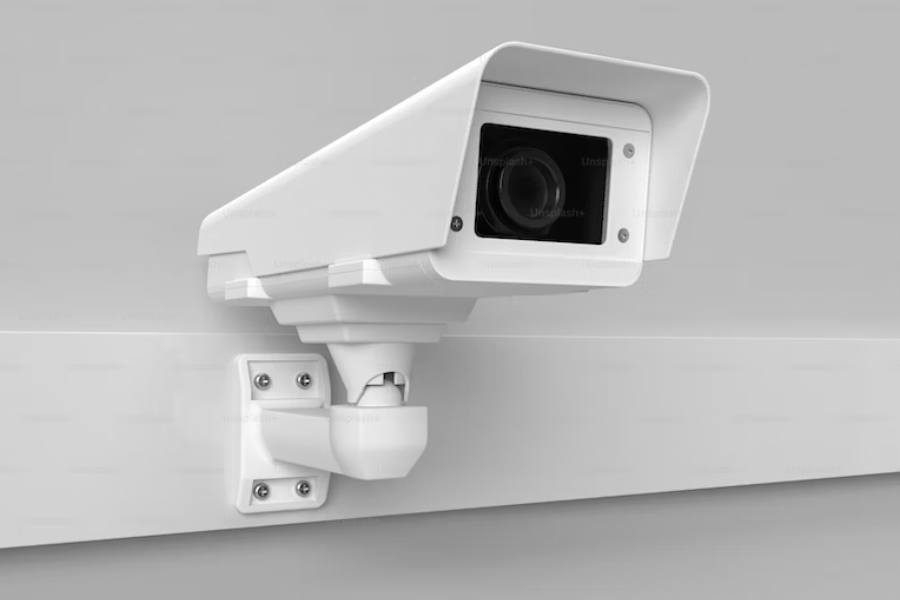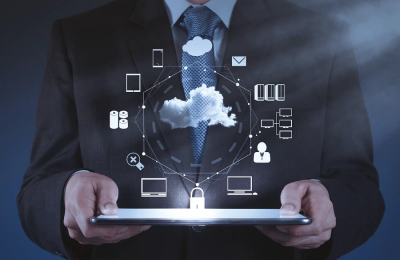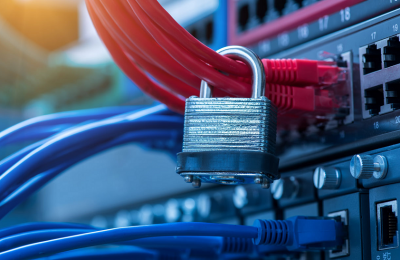Digital forensics is the extraction, preservation, identification, and documentation of computer evidence that can be used in a court of law.
It is the science that helps investigation experts and law enforcement professionals gather information from gadgets like mobile phones, computers, servers, and networks.
It helps forensics teams solve complex digital cases.
Applications of Digital Forensics
In digital forensics, the gathered evidence is used to identify, track and prevent further crimes. Some of the key applications of digital forensics are as follows.
- In criminal cases, digital forensics is used for investigating illegal activities carried out by cybercriminals. Law enforcement professionals and digital forensic experts handle these cases.
- It is also used in protecting individual rights and property and for settling contractual issues between commercial parties.
- Private sector companies also hire digital forensics experts in their cybersecurity teams. Digital forensics experts help companies deal with data leaks, breaches, and other cyber threats.
Types of Digital Forensics
Computer Forensics
The most common form of digital forensics, computer forensics, is used to identify, collect, preserve, and analyze digital evidence from computers and other digital devices.
It plays an important role in various events like cybersecurity incidents, criminal investigations, intellectual property threats, employee misconduct, and fraud.
Methodology
- Reverse Steganography: This process involves discovering evidence after analyzing data hashing. The hash marks or the data strings representing the data are bound to change if the evidence is tampered with.
- Disk Imaging: A bit-by-bit copy of a storage device like a hard drive is created in disk imaging. It ensures that the original item is preserved while the experts work on the copy. It prevents any modification or tampering in the original file.
- Cross-Drive Analysis: It involves the cross-referencing and correlation of data on various computer drives for searching, analyzing, and preserving information that is relevant to the underlying investigation.
Applications
The most common computer forensics applications include evidence collection, forensic tools, tasking, solving prior cases, and criminal investigations.
Video Forensics
Authenticate video forensics is used for analyzing and authenticating digital video evidence for investigative and legal purposes. In video forensics, videos are enhanced for extracting valuable information establishing the video’s integrity, and providing evidence during legal proceedings.
Methodology
- Video Authentication: In this process, the experts determine the authenticity and integrity of video evidence by carefully studying the video’s metadata. They look for signs of tampering and detect any alterations and modifications that might have taken place.
- Video Analysis: In this phase, a video is analyzed to extract important information like object identification, facial recognition, scene reconstruction, and motion tracking, which helps identify individuals, understand events and reconstruct crime scenes. VIP 2.0 is a popular video analysis tool.
- Video Recovery: This process involves recovering and restoring corrupted and damaged sources, including overwritten or deleted video files and files stored in incomplete or fragmented sources.
Applications
Video forensics is used in law enforcement, legal investigations, incident reconstruction, surveillance, and security, thus providing authentic video evidence admissible in a court.
However, there are some challenges. For example, varying file formats and compression techniques can result in artifacts affecting the accuracy of video evidence. Analyzing video evidence undergoing various transcoding and encoding processes can be difficult.
Database Forensics
Database forensics, AKA cloud forensics, are related to databases, as well as their metadata. The cached details may exist in the RAM of a server, and they may need live analysis techniques.
During the forensic investigation of databases, there could be a relation between timestamps that apply to a row’s update time. In a relational database, it is used for verifying a database user’s actions and their validity.
It is also used for detecting transactions in a database or applications that allude to wrongdoing.
Methodology
SQL Query Analysis: In database forensics, SQL queries play an important role in interacting with different databases and retrieving data from them. Furthermore, the analysis of SQL queries helps in the identification and prevention of malicious activities, data manipulation, and unauthorized access. The best tools in this area are Enterprise Audit, MySQL, Log Analyzer, and Microsoft SQL Server Profiler.
Database Analysis Tools: These tools are used for examining the structure of a database’s contents, analyzing metadata, and extracting data. Some examples include Oxygen Forensic Detective, DBF6300, and Forensic Toolkit for Databases.
Considerations and Challenges
Multi-Tenancy: Different VMs tend to share similar physical structures. However, it is the investigator’s job to prove malicious activities and also produce logs that confirm that the malicious activities are occurring from different service providers.
Accessing Logs: Forensic investigators, system administrators, and developers need different logs for different purposes.
Data Volatility: If the VM is turned off, the data in a virtual machine can get lost.
Mobile Forensics
As the name implies, mobile forensics is the branch of digital forensics that includes recovering valuable data from gadgets. Some common examples include tablets, smartphones, and GPS devices.
These mobile devices can store a wide range of information like phone records, text messages, voice notes, call logs, internet browsing history, and the last of downloads.
Methodology
Application Data Analysis: Mobile applications can store various data like media files, conversations, user preferences, and location details. In mobile forensics, the investigators deploy techniques that help them retrieve important data from these devices, which further helps them extract evidence. The tools used in this area of mobile forensics include Smartphone Forensics Pro, SQLite Forensic Explorer, and XRY.
Physical and Logical Analysis: It involves the connection of the data cable to the device and extracting important data using extraction software like Andriller and MOBILedit.
Data Acquisition: Like computer forensics, mobile forensics is an important component of mobile forensics. Forensic experts use different techniques and tools to acquire forensic images and extract specific data from mobile devices. It also includes extracting data from a mobile’s SIM card, storage, and cloud services. Some common tools cell phone forensics experts use include Oxygen Forensic Detective, SPF Pro, and XRY.
Applications
The military mostly uses Mobile forensic techniques to collect intelligence, plan armed missions, and mitigate terrorist threats. Corporations also use mobile forensics to prevent intellectual property theft and mitigate the chances of fraud. Law enforcement agencies use mobile forensic techniques to identify theft and homicide.
Ethical and Legal Considerations in Digital Forensics
Laws Related to Digital Forensics
One of the legal considerations in digital forensics is the individual’s right to privacy. Therefore, forensic experts have to be careful enough not to commit any violation of the Wiretap Act nor the Electronic Communication Act, as doing so could result in federal felonies.
Legal and Ethical Standards
Most types of digital forensics are used for the discovery and preservation of evidence that can be used in court. Therefore, practitioners should understand the laws and regulations related to data protection.
Professionals should avoid civil penalties and criminal charges that may result in the mishandling of evidence.

Image Source: unsplash.com
Ways to Acquire and Preserve Digital Evidence
Data gathering and recovery through different digital forensics tools and techniques is called acquisition. The investigators should know how to access, recover and store data in a way that it is safely preserved for future use. Some common data acquisition methods are as follows.
Bit-Stream Disk-to-Disk Files
It involves the use of tools to create a disk-to-disk copy.
Bit-Stream Disk-to-Image Files
Disk drives are cloned, so all the necessary evidence pieces are preserved.
Sparse Acquisition
This process involves identifying, preserving, analyzing, and presenting evidence.
Logical Acquisition
It involves the collection of files that are related to the underlying case.
Evidence Handling and Chain of Custody
Digital evidence falls within the same legal guidelines as any other kind of evidence. The guidelines are as follows.
Integrity
The process of acquiring and collecting digital media shouldn’t alter any evidence.
Authenticity
Starting from the crime scene, through the investigative process, and eventually to the court of law, the chain of custody is a crucial component in maintaining the authenticity of the evidence. It provides a comprehensive record of who accessed the file and when. It also provides a complete series of activities that happened on the file.
Ensuring Data Reliability and Integrity: Best Practices
To make sure your evidence is admissible in a court of law, you need to maintain reliability and integrity.
- Make sure to protect the digital evidence file with a strong password that is hard to breach. With a strong passcode, no one can access your data.
- Create a duplicate of the actual file, and work on it accordingly. Limiting every action on the original file is imperative. Otherwise, it won’t be acceptable in court.
- The authenticity and integrity of digital evidence cannot be proved if the system creates hash values that are different from the ones on the original evidence. Therefore, it is important to encrypt the file on your hard drive.
Interpreting and Analyzing Digital Evidence
Techniques for Interpreting and Analyzing Digital Evidence
- Acquisition: It is the collection of data evidence from a device or a network through imaging logging or live acquisition.
- Analysis: It is the examination of the evidence for identifying relevant information.
- Reporting: This is the documentation of findings of the analysis and presenting them in a clear-cut manner for legal proceedings to take place.
Challenges in Evidence Analysis
Encryption
If the device or network is encrypted, accessing data can be difficult.
Deconstruction
Some criminals try to destroy evidence by wiping or destroying the devices.
Storage
Modern devices can carry a huge amount of data. As a result, it becomes challenging for forensic experts to search for relevant pieces of information in a timely manner.
Effective Reporting and Presentation of Findings
In digital forensics, the presentation and reporting of findings are important for the communication of results in a forensic exam. It may also include creating a comprehensive record of the evidence, which helps provide testimony in court.
- The report should be written in such a fashion that it is easy to read for both technical and non-technical readers.
- The report must be organized in a systematic structure, and it must have a logical structure.
- The report must also offer complete details of the tools and methodologies employed by forensic experts during the investigative process.
- The report must present the findings obtained during the forensic examination.
Final Word
Contrary to popular belief, digital forensics isn’t just confined to computing and digital environments. This area of science has a bigger impact on the society we live in. All areas of our lives have been taken over by computers, mobile phones, and various other gadgets, so digital evidence is paramount when solving crime cases and legal issues.
We live in a world with devices that generate huge amounts of data. Some of these devices keep tabs on all the actions committed by their users, as well as some of the autonomous activities performed by the device itself. These activities include data transfers and network connections.
Be it online fraud, data theft, identity theft, or more serious crimes like murder, burglary or sexual assault, or white-collar crime, digital evidence plays a key role in finding the perpetrators. Different types of digital forensics are used for different cases, and they help bring criminals to justice. A cyber forensic expert can help you out with this.
At Eclipse Forensics, we offer services like digital audio forensic services FL, cell phone searching, video forensics, data redaction, and file extraction and conversion. To benefit from our services, head over to our website or call (904) 797-1866.










